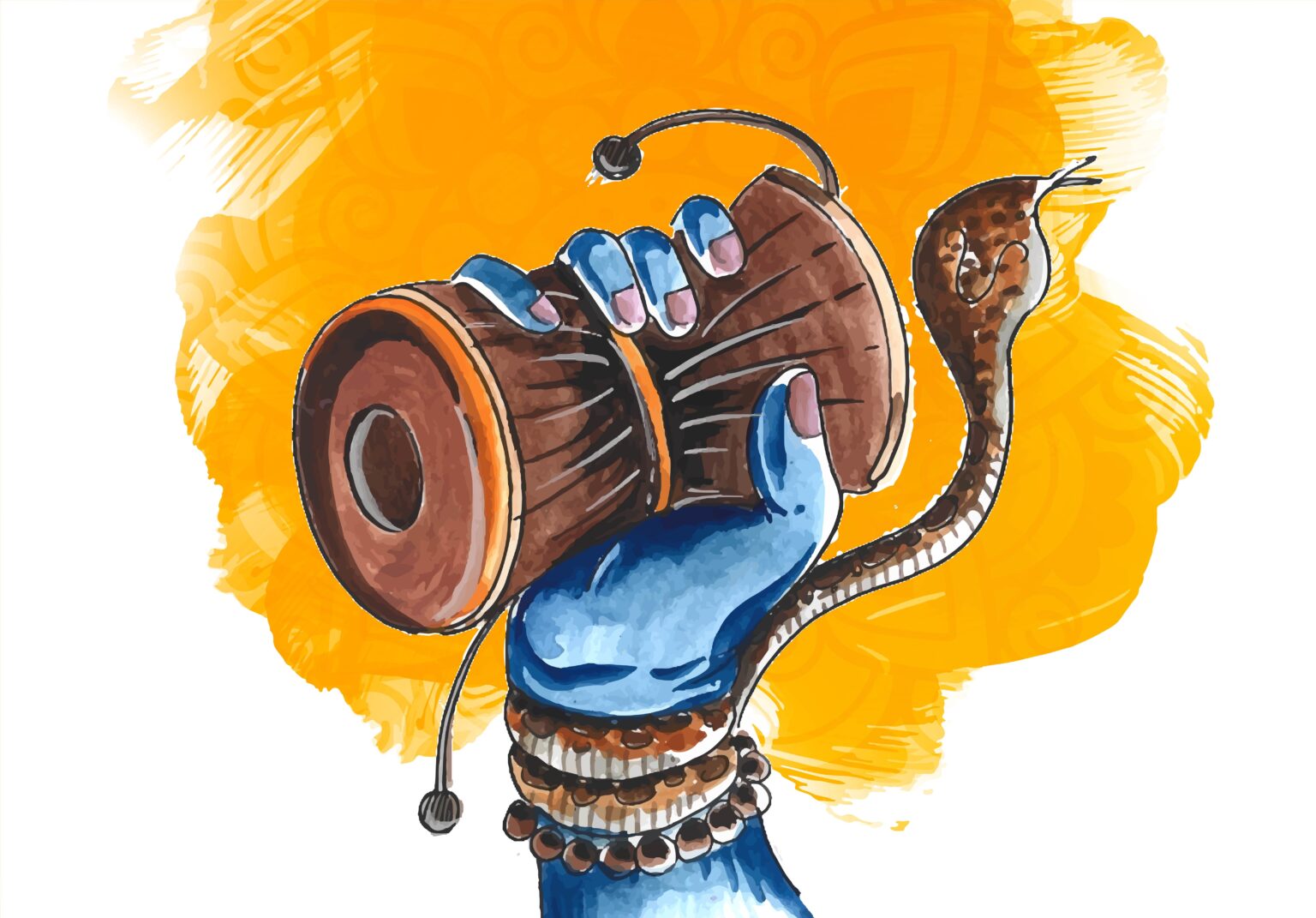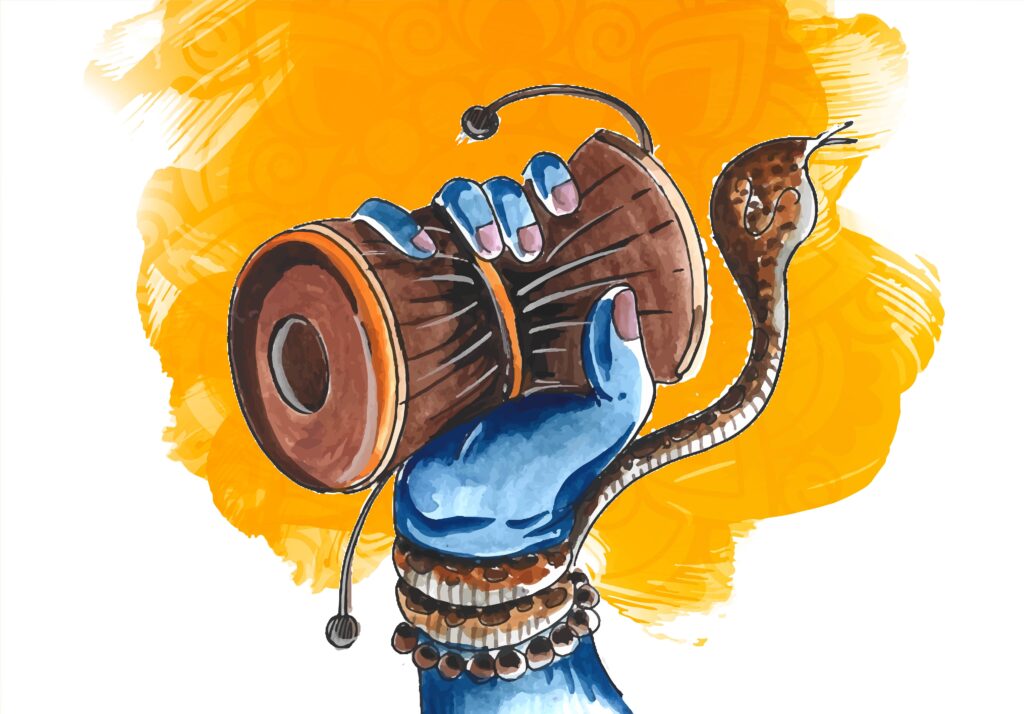Buy new: (Paperback)

Buy new: (Paperback)

Buy new: (Kindle version)
Order My Book From Amazon

The prime responsibility of every Sanatani is to indulge in the deed of righteousness and serve humanity. When I say serving humankind, it means protecting morality and establishing social justice. People who don’t follow the path of ethical values and righteousness cannot find peace in themselves. In simple words, they are not following their dharma. Here, the word dharma means everlasting obligations.
For example, a mail man’s dharma is to deliver the post to the recipient. So, the word dharma doesn’t signify any religion. In fact, Sanatan Dharma is not a religion. It is an honest and vibrant way of life that reminds people of their eternal responsibilities. But the problem with many people is they are ignorant about the authentic meaning of dharma and don’t comprehend the essence of morality in the genuine sense.
Sanatan Dharma is an ancient philosophy and way of life in which intellectuals and sages believe taking birth as a human is a gift to us from divinity. Indeed, our soul goes through 84 lakh Yonis before getting the human form. Therefore, one should not waste living an adharmic and directionless life.
The ultimate purpose of human life is to unite with the supreme consciousness, and the best way to achieve that goal is by following our dharma. Thus, people must follow the path of righteousness and devote themselves to a dharmic life.
If someone wants to know how to follow the path of righteousness and dharma, they must learn it from the philosophy of Shri Rama
[Ebook Amazon Store]. Every Bhartiya (Indian) person connected to their roots sees Lord Rama as their ideal. The name of Rama is the base of the entire Sanatani civilization. This ancient civilization is based on the science and law of nature.
The first key aspect of Sanatan Dharma is to help the unprivileged people. Thus, supporting unfortunate people is the primary responsibility of people in Sanatani culture. Successful people who share their resources with others are supposed to be divine in this culture.
The same goes for someone who saves someone’s life from the potential threat. Such people who protect other lives are supposed to be divine beings. It is the reason people refer to genuine doctors and medical staff as gods.
The most captivating thing about Sanatan dharma is every act of kindness or fulfilling our responsibility with sincerity adds positivity to our lives and makes us spiritually more effective. The cosmic energy becomes a piece of our ambiance and helps us to attract good luck and fortune.
The intriguing thing is we all are part of the same consciousness. But we are not spiritually aware of this truth. In fact, very few people know we radiate our Karmic energy to supreme consciousness through our mind, body, and soul. Thus, the more unselfish work we do, the more spiritually strong we become. So, try to experience the joy of giving to others.
The mind, body, and soul are three elemental tools we can use to perform the act of righteousness as our dharma. The vibration of our every deed affects our magnetic field and entangles our astronomical calculations straightly connected to the supreme reality.
Performing any action with evil intentions will reduce our spiritual energy. But when we involve ourselves in the acts of adequate dharma, our spiritual energy gets a significant boost. It is called Punya Karma.
Temples are high-energy places where spiritual energy transformation happens frequently. Thus, visiting holy places like temples raises our spiritual energy and allows us to connect with a more generous divine influence. That is the reason people love to visit temples and sacred sites because their spiritual energy grows at those places.
In Sanatan Dharma, diviners believe that whenever someone visits such shrines at the very moment, their negativity lowers, which means liberation from various afflictions. Our spiritual energy has a level. And if it drops to the lowest level, then the universal energy of supreme consciousness will pull it out and leave you alone.
The modern physicist says that our universe is a dynamically thriving entity. And at the end of everything, it will dissolve in supreme consciousness. Vedas also states the same thing.
In the Vedic scriptures, Lord Brahma is the creator. Lord Vishnu maintains the creation, and Shiva is the great destroyer who will eventually bring about the end of the universe. Brahmadev’s creativity includes Shiva. But people rarely worship Brahmadev because of a curse placed on Him.
Lord Shiva is another name for the Supreme Lord, responsible for creating, protecting, and transforming the universe. So, since Lord Shiva is part of the creation process, he also has the power to destroy everything.
Meanwhile, if we break the word God into three parts, it signifies this:
G = Governor, O = Operator, and D = Destroyer.
The Governor is Lord Brahma, the creator of the universe. The Operator is Lord Vishnu. He is the preserver of the universe and the epitome of dharma. And Lord Shiva is the ultimate destroyer.
But one should not comprehend Lord Shiva in a wrong approach. In fact, the destructive nature of Shiva symbolizes the crucial process of something that needs to end for something better to begin. Thus, the destructive powers of Shiva clear the path for new possibilities and growth for the universe to grow.
Subscribe to our free newsletter, and unlock the best spiritual and devotional articles.

A great devastation occurs at the end of every Yuga in which various destructive energies emanate from Lord Shiva. The holy book Srimad Bhagavatam says there are five gates leading to hell.
These gates create delusions in the mind and distract people from the path of dharma. Hence, these lead to the degradation of the soul. Thus, every sane man should give these up to follow the path of dharma. Those people following the path of dharma are part of the Lord Shiva consciousness.
Following the path of dharma helps people to get close to Shiva and attain Moksha.
‘Tri-vidham narakasyedam dvaram nashanam aatmanah, kamah krodas tathaa lobhas tasmaad etat trayam tyajet.’
Lord Shiva destroys these evils and frees every person from all the limitations. The people free from infirmities and darkness can easily invite lord Shiva into their hearts and let Shiva guide them in the right direction. Lord Shiva is the Adiguru. And when he dwells in one’s heart, they experience eternal bliss.

Lord Shiva also beheaded Daksha and freed Daksha from his ego. It enabled Daksha to see the reality. Afterward, Daksha came refugee to Lord Shiva. Daksha’s yagna was unsuccessful in fulfilling its primary goal of personal transformation. The point of yagna is not to make us seek control over the world or others by taking advantage of what we possess. But to let go arrogance, wickedness and be generous with what we have. It is also the major lesson of Vedanta
Lord Shiva is the super destroyer, the prominent deity who removes whatever no longer serves a higher purpose in our lives.
In this post, I have described Shiva as the remover of darkness. You can ask me, “But, Santosh, what do you mean by darkness here? Can you put a light on this?”
Dear reader let me explain why Shiva is known as the remover of darkness. But first, let us understand the meaning of darkness.
Darkness means Andhakar. In more refined terms, it means our material desire and thoughtlessness. Lord Shiva is associated with the impaling of an asura called Andhakasura, or darkness. He is a demon of extreme insensibility and ignorance who cannot differentiate between mother and wife. It is such a conduct which is even worse than animals. People who follow Lord Shiva get light of knowledge in their lives, as Shiva himself is the Paramjyoti.
Lord Shiva is also the destroyer of Kama, the deity of desire. Hence, Shiva is called Kamataka. Apart from this, Shiva overpowers Yama, the deity of death, which is why Shiva is called Yamantaka. He is associated with the beheading of Brahma, hence Kapalin.
He destroys three cities of Asuras, the Tripur, hence called Tripurantaka. He’s also associated with the consumption of the poison, Halahal that emerges from the cosmic ocean (Sheer Sagar) churning.
The main point of the above statement is how individuals can make their dreams a reality without overcoming inner despair, lust or fear of failure.
The destructive power of Shiva is phenomenal. When Lord Shiva comes to destroy something, no one can stop him. But there is also another aspect of the Lord Shiva’s destruction that is complied with the actions associated with regeneration: marrying Shakti, then becoming a father of Karthikeya and Ganesha, and enabling the descent of the river Ganga from heaven to earth, symbolizing rebirth.
Therefore, I would like to say that Lord Shiva is the most significant destroyer. But he is also the most splendid creator. Devotion to Lord Shiva leads to a life of dharma and ultimate bliss.
Shiva has both benevolent and frightening aspects. The Yajurveda describes Lord Shiva as Mahadev [Ebook Amazon store] , the supreme lord. Shiva has a third eye on his forehead, which looks inwards. When it turns outwards, it can issue a flame of fire to burn the enemy.
Another name of Lord Shiva is Rudra. It means the destroyer of evil-doers. He is the god of storms and destruction, who is fear-inducing but benevolent at the same time.
He is the father of all creations. Thus, as a father, he would be strict and apply punishment whenever necessary to teach a lesson. When the people of the world go out of their limits and cause constant wrongdoings, then the wrath of Shiva brings about natural calamities like storms, tornadoes, tsunamis, earthquakes, avalanches, fires, and volcano eruptions.
These destructions are all attributed to Shiva. In that instant, Shiva assumes his Rudra form, commences his tandav, and initiates the annihilation. He is a lord who needs to be appeased and kept calm by our obedience to follow the righteous path to prevent his third eye from opening and causing destruction.
Sharing is Caring
Friends, your every share motivates us to write more spiritual content for all the readers and helps the search engine algorithm reach the right audience. We are grateful for all your kindness and support.
Or you can also follow us on Facebook Author page
Aum Namah Shivaya

Santosh Gairola is an Indian-origin Author, Educator, & Blogger. He is an adherent devotee of Lord Shiva and Lord Hanuman.
Subscribe to our free newsletter, and unlock the best spiritual and devotional articles.

At Santosh Gairola dot com, I enjoy suggesting highly rated books on Lord Shiva, Sanatan Dharma, and more to aid in discovering inner peace.
The Magnificent Shiva: Why there is no one like Lord Shiva? Paperback
Lord Shiva Book

Buy new: (Paperback)

Buy new: (Paperback)

Buy new: (Kindle version)
Share via:
Subscribe to our newsletter
1 thought on “The reason why Lord Shiva is called the destroyer”
This article offers a fascinating perspective on the subject. The depth of research and clarity in presentation make it a valuable read for anyone interested in this topic. It’s refreshing to see such well-articulated insights that not only inform but also provoke thoughtful discussion. I particularly appreciated the way the author connected various aspects to provide a comprehensive understanding. It’s clear that a lot of effort went into compiling this piece, and it certainly pays off. Looking forward to reading more from this author and hearing other readers’ thoughts. Keep up the excellent work!